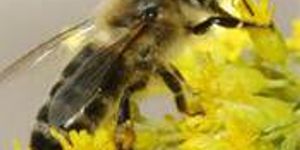Microbiology
MIT Engineers Design Functional Living Materials
MAR 28, 2014 12:00 AM PDT
Share
Controlling Deer Populations May Help Native Plant Species
 If you have a problem with too much garlic mustard, you may think you are sitting in a New York delicatessen. That may also be a problem, but our concern is with an overabundance of garlic mustard plants in Pennsylvania forests.
If you have a problem with too much garlic mustard, you may think you are sitting in a New York delicatessen. That may also be a problem, but our concern is with an overabundance of garlic mustard plants in Pennsylvania forests. In a new study that was published in a recent online edition of the Proceedings of the National Academy of Sciences, scientists from the University of Miami and the University of Pittsburgh have concluded that a surplus of deer are causing the massive overgrowth of garlic mustard in some forests in Pennsylvania.
The garlic mustard plant, also known as Allaria petiolata, is native to Asia and Europe, and it was introduced into the U.S. in the mid-1800s. The plant quickly thrived and spread throughout eastern areas of the U.S. and Canada, helping to displace some native plants. It is so hardy that it has been able to invade the understories of forests.
The garlic mustard plant has one other advantage-deer will not eat it. The researchers presumed that this serves as a double whammy to native plants, since they have to deal with being consumed by deer and being crowded out by an invasive, non-native species.
To test the effect, the research team undertook a long-term study starting back in 2003 in a nature reserve outside of Pittsburgh, known as the Trillium Trail Nature Reserve for its significant population of trillium plants. A series of plots of 196 m2 were established, and half of those plots were fenced to prevent deer from grazing.
As expected, the unfenced areas showed no changes in the trends, and in the fenced areas the trillium population increased significantly without the deer to feed on it. However, native plants not only increased in the fenced areas, they managed to reverse the invasive effect of the garlic mustard plants. Over the years, native plants overtook garlic mustard plants in the fenced areas, and the garlic mustard plants there are now approaching zero.
This makes the solution relatively obvious-control the deer population, and you can reverse the trends back toward native plants and improved biodiversity. While the solution may be obvious, it is not necessarily simple.
To manage the deer population it is necessary to determine what the optimum number of deer is going to be-and some thought would need to be given to any unforeseen consequences to the ecosystem from harvesting of deer, especially to excess. It would be possible to determine the correct number of deer by trial and error, monitoring the number of deer and checking the effect on biodiversity and invasive plant control.
A further problem may be in politics and state policies. Some states manage their deer population through hunting and conservation policies, while others do not. A state may also conclude that a plentiful deer population is more important than preserving any specific native plant.
In any case, the research team has shown us a way to deal with the invasive garlic mustard plant. Whether we choose to use it or not remains to be seen.
You May Also Like
Loading Comments...








